Adler17
Prussian Feldmarschall
This thread deals about the Naval activities in the Franco- German war of 1870/71. While there is much written about the land fights, the naval activities are pretty much unknown, mostly due to the fact that there weren’t any great battles. But nevertheless this area is a bit underestimated, so I will post here a small summary. Since I have only one good source, it will be from the German side, but giving the most important facts about the French side.
In summer 1870 no side was prepared for a war. So also the small German navy wasn’t.
But at first short summary what happened before that summer.
In 1848 the March revolutions in Germany brought the first German parliament in Frankfurt am Main- and the first war with Denmark. That trouble was explained by me in my thread about the history of Schleswig- Holstein so I will only give here a few basic informations about the war and most notably the naval situation.
The newly formed German navy was very small. There were only a few frigates and corvettes- nothing really sufficient to beat the strong Danish navy. Nevertheless in the battle of Eckernförde the German coastal artillery was able to sink the ship of the line Christian VIII. and disable the frigate Gefion which was captured and introduced into the German navy as Eckernförde. But due to several circumstances the German states had to make peace with Denmark agreeing to a treaty in which the status quo ante was achieved. And with the following end of the revolution and the national assembly in the Paulskirche, the small German fleet was dissolved.
Prussia, which wanted to build up a fleet for protecting the coast, bought some of the ships, including the renamed frigate SMS Gefion. In the next time Prussia tried to build up a fleet, but when the next war came there was still a small Prussian navy in the second war with Denmark in 1864. But despite the fact that the Prussian and Austrian navies were too small to beat the Danes, the Germans were able not only to beat the Danes in Jutland but also to invade Alsen. After that invasion the Danes made peace.
The war of 1866 saw some battles in the Adria, like Lissa, but none in German waters, so the small Prussian navy was not involved in the fightings. After the German War the North German Confederacy was formed as the first German unified state since the death of the Holy Roman Empire. Nevertheless Bavaria, Baden, Württemberg and Hessen were not in this confederacy. But they were allied with it in a secret mutual defence pact.
In summer 1870 the German fleet was still in the phase of building up. 16 armoured frigastes, 22 corvettes and a number of gunboats shpould have been built until a war with France. The main core of the fleet were 5 armoured ships, 3 armoured frigates and 2 ironclads. The two armoured frigates SMS Kronprinz and SMS Friedrich Carl were both built in 1867 on British and French yards for Prussia. They were both about 7.000 t big and carried 16 21 cm guns. They were equivalent to the ships of other navies. Then there were two ships called armoured ships, but the terminus ironclad fits better. SMS Prinz Adalbert (1560 t) and SMS Arminius (1829 t). While latter was designed as monitor after the influence of the American Civil War, SMS Prinz Adalbert was built for the CSA as ram ironclad (Widderschiff). It was laid down as Cheops for Egypt but should go to the Confederate navy. Because of diplomatic pressure by the USA the French government gave the order not to sell this ship and her sister Sphinx to the CSA, so the French yard had to find new buyers. And so to belligerent powers tried to buy them in 1864: Denmark and Prussia. Denmark rejected finally the CSS Sphinx, which was then given to the CSA, being in service as CSS Stonewall. She was given to the US by Spain after the war ended as the ship was in Havanna. Later it was sold to Japan. In 1865 however the ship was finally sold to Prussia with a price reduction of 100.000 Fr., but because of several reasons there were still problems to be solved. One of them was the danger to be captured and seized by the CSA in neutral waters as the ship was built originally for them. So Korvettenkapitän Schau, Kapitänleutnant Mac Lean and a German engineer director, Jansen, had to be as passengers there to prevent that on the maiden voyage to Germany, where she arrived without problems.
SMS Arminius was armed with 4 21 cm guns and a brand new 35 cm torpedo tube, a new weapon the Germans had to test. It was not before 1880 when the weapon was recognized as the potential it had, when Kapitänleutnant Tirpitz, the later Grand Admiral, commandeered the torpedo test cruiser SMS Blücher.
SMS Prinz Adalbert was armed with one 21 cm and 2 17 cm guns. It was known as the lame Prince as due to bad wood it tended to have leakages.
The flag ship however was in 1870 the armoured frigate SMS König Wilhelm. Originally built as Turkestan, later Fatih, for the Ottoman navy, the ship was sold to Prussia as the Ottomans could not afford the ship due to internal struggles any more and the fact, the British navy did not want the ship. SMS König Wilhelm was the most powerful ship on the oceans in that days. 10761 t and 18 24 cm and 5 21 cm guns made the ship to a danger for any other ship on the waters.
To these ships a number of so called flushdeck corvettes (sloops) (Glattdeckskorvetten), SMS Nymphe, Medusa, Augusta, Victoria and lightly armoured corvettes (Gedeckte Korvette) SMS Arcona, Elisabeth, Gazelle, Vineta, Hertha, has to be added. If someone knows the exact English terms, I would be glad if you tell me. These ships were equal mostly to cruiser. The last were 2912 t (SMS Augusta and SMS Victoria 2272 t) big with an armament of 17 15 cm (6 24 pounder, 4 12 pounder) guns, while the first displaced 1202 t and were armed with 10 36 pounder and 6 12 pounder guns (= 12 cm).
As escorts a number of gunboats was used. These were the gunboats first class SMS Camaeleon, Comet, Cyclop, Meteor, Delphin, Blitz, Basilisk and Drache. They displaced 422 t and were armed with one 24 pounder (=15 cm) and two 12 pounder (= 12 cm) guns. Also there were the gunboats second class SMS Jäger, Crocodill, Hay, Scorpion, Fuchs, Sperber, Hyäne, Habicht, Pfeil, Natter, Schwalbe, Salamander, Wespe, Tiger and Wolf. These 283 t small ships had the same armament like their big brothers.
Also two avisos have to be mentioned, SMS Preußischer Adler and Grille. The first one displaced 1430 t and was armed with 4 24 pounder and the second, which was also the Royal Yacht, displaced 491 t and was armed with 2 12 pounder guns.
These smaller ships were already built on German yards.
During the war only one ship was introduced: SMS Falke, an aviso of 1230 t and an armament of 2 12 cm guns. It should become a test ship for the new torpedoes. It was built in Scotland for the CSA but they never bought it. So the ship was sold to a Dutch being named as Heinrich Heister. In August 1870 Korvettenkapitän Graf von Waldersee should buy a test ship for torpedoes, when he found this ship. Due to neutrality laws, he went to the Dutch owner as Mr. John Smith from London and bought the ship for £ 12.500. After sailing out of the harbour of Dordrecht an der Oude Maas, Mr. Smith gave the order to run to the harbour of Delfzijl, where his “partners” wanted to have the ship. Because it was difficult to navigate in the mouth of river Ems due to the fact that because of the war signs were missing, Graf von Waldersee had, “coincidentally”, maps of the area and so lead the ship. After meeting the gunboat SMS Natter or Wespe, he told their commander what was going on and was escorted to Emden. As SMS Emden the ship was brought to Wilhelmshaven, where she was fitted out as warship and served from 4th of October as SMS Falke. The Aviso however was badly damaged by the first war sortie by being rammed by SMS Arminius. Because the only dock was occupied, the damages had to be repaired scantily. The ship was repaired in 1871 but did not re-enter service until 1875 after knowing the ship was not suitable as torpedo platform.
Other German ships were the old sailing ship of the line SMS Renown and the frigates SMS Gefion, Niobe and Thetis. These ships were used as training ships and hopelessly out dated in fights with modern armoured ships. So most of the time they either had the watch over their harbours or were used as bases and not taken into combat missions.
So except these 5 last mentioned ships the German navy had 37 ships to fight an enemy multiple times as big. France had the second biggest fleet in that times.
That was the situation of the Fleet of the North German Federation in 1870.
In July 1870 the German Naval commander was Admiral Adalbert Prinz von Preußen. However he wasn’t really able to lead the fleet on the seas any more because he had bad eyes, so the real commander was Vice admiral Eduard (v.) Jachmann. Jachmann expected because of the health of Prinz Adalbert he would lead the Armoured Squadron in June 1870 into the Atlantic ocean to make exercises there. But for the last time the price was given the command. It was clear he wasn’t able to do so, but he should get the command for a last time. But this voyage started under bad signs: The SMS Friedrich Carl and SMS Kronprinz were damaged and had to go to Britain into dock there as there was no suitable dock in Germany. Also SMS König Wilhelm had troubles with the engines and so the only ship in the squadron to come to Britain without problems was SMS Prinz Adalbert, a ship which had commonly problems.
These problems were not entirely solved at July 1st, when the squadron, together with SMS Renown and SMS Delphin was formed in Plymouth. The Prince wanted to go into the Atlantic ocean a few days later, where SMS Arcona should join the task force. But shortly before the North German ambassador, Graf von Bernstorff, made a warning because of tensions with France. Oberst Roerdanz, military attaché in London, who should make excellent intelligence work in the war later, had warned Bernstorff before. So the prince decided to detach SMS Prinz Adalbert to take the latest news from the embassy. He drove to the west entrance of the Channel but soon decided to go back to rejoin with the ironclad. On July 13th the squadron was again complete as the ironclad returned with Bismarck’s war warning for all German ships. Also the commander of SMS Preußischer Adler brought a telegram with Bismarck’s order to return immediately. The Prince decided at once to return to Germany. As the ships had nothing more than exercise ammunitions the voyage had to be made at full speed. Because this was too much for SMS Prnz Adalbert, the ship had to be pulled by SMS Kronprinz. But the German ships reached Wilhelmshaven on July 16th. But this was still a secret for the French who still thought the German squadron was in the channel and sent a fleet on July 24th to search and destroy the German ships.
As I already said before the German fleet was everything else than prepared. SMS Hertha and Medusa were both in East Asia, SMS Meteor in the West Indies and SMS Arcona in the west Atlantic. But also the fleet was still far away to fulfil the tasks. The plan of 1867 was to have more ships to cope with the French. To crush any blockade and to sink the enemy. But that was nearly impossible, so that this task had to be reduced to the following:
1. To protect the German shores from enemy bombardment/ landings.
2. To keep Denmark out of the game, since they had no big armoured warships in 1870
The French Rear Admiral Bouët-Willaumez made already in 1867 this plan: The North Fleet should drive into the North Sea and then to the Baltic after the Mediterranean Fleet arrived. Then a transport fleet of about 100 ships should bring 30.000 men to Denmark to “convince” the Danes to go for war. Indeed the Germans had only one corps to guard the Danes and Austrians each.
But this plan didn’t work: Due to the fast German victories the units supposed to land in Denmark were now used in France. So the Danes could not be “convinced” by the squadron Vice Admiral Bouët-Willaumez lead to declare war. Nevertheless it is remarkable that the German armoured ships were not in Kiel threatening Copenhagen, in a fortified harbour instead of Wilhelmshaven, where the entire port was still being built and where no real fortifications were in that days. Since the German North Sea coast is not very suitable for amphibious landings the reason must have been the security of Hamburg and Bremen. But you can question here if it wouldn’t have been better to have the ships in Kiel as a new front in the North Germany couldn’t afford. Also you can criticise Jachmann for not being very offensively in the later phase.
In summer 1870 no side was prepared for a war. So also the small German navy wasn’t.
But at first short summary what happened before that summer.
In 1848 the March revolutions in Germany brought the first German parliament in Frankfurt am Main- and the first war with Denmark. That trouble was explained by me in my thread about the history of Schleswig- Holstein so I will only give here a few basic informations about the war and most notably the naval situation.
The newly formed German navy was very small. There were only a few frigates and corvettes- nothing really sufficient to beat the strong Danish navy. Nevertheless in the battle of Eckernförde the German coastal artillery was able to sink the ship of the line Christian VIII. and disable the frigate Gefion which was captured and introduced into the German navy as Eckernförde. But due to several circumstances the German states had to make peace with Denmark agreeing to a treaty in which the status quo ante was achieved. And with the following end of the revolution and the national assembly in the Paulskirche, the small German fleet was dissolved.
Prussia, which wanted to build up a fleet for protecting the coast, bought some of the ships, including the renamed frigate SMS Gefion. In the next time Prussia tried to build up a fleet, but when the next war came there was still a small Prussian navy in the second war with Denmark in 1864. But despite the fact that the Prussian and Austrian navies were too small to beat the Danes, the Germans were able not only to beat the Danes in Jutland but also to invade Alsen. After that invasion the Danes made peace.
The war of 1866 saw some battles in the Adria, like Lissa, but none in German waters, so the small Prussian navy was not involved in the fightings. After the German War the North German Confederacy was formed as the first German unified state since the death of the Holy Roman Empire. Nevertheless Bavaria, Baden, Württemberg and Hessen were not in this confederacy. But they were allied with it in a secret mutual defence pact.
In summer 1870 the German fleet was still in the phase of building up. 16 armoured frigastes, 22 corvettes and a number of gunboats shpould have been built until a war with France. The main core of the fleet were 5 armoured ships, 3 armoured frigates and 2 ironclads. The two armoured frigates SMS Kronprinz and SMS Friedrich Carl were both built in 1867 on British and French yards for Prussia. They were both about 7.000 t big and carried 16 21 cm guns. They were equivalent to the ships of other navies. Then there were two ships called armoured ships, but the terminus ironclad fits better. SMS Prinz Adalbert (1560 t) and SMS Arminius (1829 t). While latter was designed as monitor after the influence of the American Civil War, SMS Prinz Adalbert was built for the CSA as ram ironclad (Widderschiff). It was laid down as Cheops for Egypt but should go to the Confederate navy. Because of diplomatic pressure by the USA the French government gave the order not to sell this ship and her sister Sphinx to the CSA, so the French yard had to find new buyers. And so to belligerent powers tried to buy them in 1864: Denmark and Prussia. Denmark rejected finally the CSS Sphinx, which was then given to the CSA, being in service as CSS Stonewall. She was given to the US by Spain after the war ended as the ship was in Havanna. Later it was sold to Japan. In 1865 however the ship was finally sold to Prussia with a price reduction of 100.000 Fr., but because of several reasons there were still problems to be solved. One of them was the danger to be captured and seized by the CSA in neutral waters as the ship was built originally for them. So Korvettenkapitän Schau, Kapitänleutnant Mac Lean and a German engineer director, Jansen, had to be as passengers there to prevent that on the maiden voyage to Germany, where she arrived without problems.
SMS Arminius was armed with 4 21 cm guns and a brand new 35 cm torpedo tube, a new weapon the Germans had to test. It was not before 1880 when the weapon was recognized as the potential it had, when Kapitänleutnant Tirpitz, the later Grand Admiral, commandeered the torpedo test cruiser SMS Blücher.
SMS Prinz Adalbert was armed with one 21 cm and 2 17 cm guns. It was known as the lame Prince as due to bad wood it tended to have leakages.
The flag ship however was in 1870 the armoured frigate SMS König Wilhelm. Originally built as Turkestan, later Fatih, for the Ottoman navy, the ship was sold to Prussia as the Ottomans could not afford the ship due to internal struggles any more and the fact, the British navy did not want the ship. SMS König Wilhelm was the most powerful ship on the oceans in that days. 10761 t and 18 24 cm and 5 21 cm guns made the ship to a danger for any other ship on the waters.
To these ships a number of so called flushdeck corvettes (sloops) (Glattdeckskorvetten), SMS Nymphe, Medusa, Augusta, Victoria and lightly armoured corvettes (Gedeckte Korvette) SMS Arcona, Elisabeth, Gazelle, Vineta, Hertha, has to be added. If someone knows the exact English terms, I would be glad if you tell me. These ships were equal mostly to cruiser. The last were 2912 t (SMS Augusta and SMS Victoria 2272 t) big with an armament of 17 15 cm (6 24 pounder, 4 12 pounder) guns, while the first displaced 1202 t and were armed with 10 36 pounder and 6 12 pounder guns (= 12 cm).
As escorts a number of gunboats was used. These were the gunboats first class SMS Camaeleon, Comet, Cyclop, Meteor, Delphin, Blitz, Basilisk and Drache. They displaced 422 t and were armed with one 24 pounder (=15 cm) and two 12 pounder (= 12 cm) guns. Also there were the gunboats second class SMS Jäger, Crocodill, Hay, Scorpion, Fuchs, Sperber, Hyäne, Habicht, Pfeil, Natter, Schwalbe, Salamander, Wespe, Tiger and Wolf. These 283 t small ships had the same armament like their big brothers.
Also two avisos have to be mentioned, SMS Preußischer Adler and Grille. The first one displaced 1430 t and was armed with 4 24 pounder and the second, which was also the Royal Yacht, displaced 491 t and was armed with 2 12 pounder guns.
These smaller ships were already built on German yards.
During the war only one ship was introduced: SMS Falke, an aviso of 1230 t and an armament of 2 12 cm guns. It should become a test ship for the new torpedoes. It was built in Scotland for the CSA but they never bought it. So the ship was sold to a Dutch being named as Heinrich Heister. In August 1870 Korvettenkapitän Graf von Waldersee should buy a test ship for torpedoes, when he found this ship. Due to neutrality laws, he went to the Dutch owner as Mr. John Smith from London and bought the ship for £ 12.500. After sailing out of the harbour of Dordrecht an der Oude Maas, Mr. Smith gave the order to run to the harbour of Delfzijl, where his “partners” wanted to have the ship. Because it was difficult to navigate in the mouth of river Ems due to the fact that because of the war signs were missing, Graf von Waldersee had, “coincidentally”, maps of the area and so lead the ship. After meeting the gunboat SMS Natter or Wespe, he told their commander what was going on and was escorted to Emden. As SMS Emden the ship was brought to Wilhelmshaven, where she was fitted out as warship and served from 4th of October as SMS Falke. The Aviso however was badly damaged by the first war sortie by being rammed by SMS Arminius. Because the only dock was occupied, the damages had to be repaired scantily. The ship was repaired in 1871 but did not re-enter service until 1875 after knowing the ship was not suitable as torpedo platform.
Other German ships were the old sailing ship of the line SMS Renown and the frigates SMS Gefion, Niobe and Thetis. These ships were used as training ships and hopelessly out dated in fights with modern armoured ships. So most of the time they either had the watch over their harbours or were used as bases and not taken into combat missions.
So except these 5 last mentioned ships the German navy had 37 ships to fight an enemy multiple times as big. France had the second biggest fleet in that times.
That was the situation of the Fleet of the North German Federation in 1870.
In July 1870 the German Naval commander was Admiral Adalbert Prinz von Preußen. However he wasn’t really able to lead the fleet on the seas any more because he had bad eyes, so the real commander was Vice admiral Eduard (v.) Jachmann. Jachmann expected because of the health of Prinz Adalbert he would lead the Armoured Squadron in June 1870 into the Atlantic ocean to make exercises there. But for the last time the price was given the command. It was clear he wasn’t able to do so, but he should get the command for a last time. But this voyage started under bad signs: The SMS Friedrich Carl and SMS Kronprinz were damaged and had to go to Britain into dock there as there was no suitable dock in Germany. Also SMS König Wilhelm had troubles with the engines and so the only ship in the squadron to come to Britain without problems was SMS Prinz Adalbert, a ship which had commonly problems.
These problems were not entirely solved at July 1st, when the squadron, together with SMS Renown and SMS Delphin was formed in Plymouth. The Prince wanted to go into the Atlantic ocean a few days later, where SMS Arcona should join the task force. But shortly before the North German ambassador, Graf von Bernstorff, made a warning because of tensions with France. Oberst Roerdanz, military attaché in London, who should make excellent intelligence work in the war later, had warned Bernstorff before. So the prince decided to detach SMS Prinz Adalbert to take the latest news from the embassy. He drove to the west entrance of the Channel but soon decided to go back to rejoin with the ironclad. On July 13th the squadron was again complete as the ironclad returned with Bismarck’s war warning for all German ships. Also the commander of SMS Preußischer Adler brought a telegram with Bismarck’s order to return immediately. The Prince decided at once to return to Germany. As the ships had nothing more than exercise ammunitions the voyage had to be made at full speed. Because this was too much for SMS Prnz Adalbert, the ship had to be pulled by SMS Kronprinz. But the German ships reached Wilhelmshaven on July 16th. But this was still a secret for the French who still thought the German squadron was in the channel and sent a fleet on July 24th to search and destroy the German ships.
As I already said before the German fleet was everything else than prepared. SMS Hertha and Medusa were both in East Asia, SMS Meteor in the West Indies and SMS Arcona in the west Atlantic. But also the fleet was still far away to fulfil the tasks. The plan of 1867 was to have more ships to cope with the French. To crush any blockade and to sink the enemy. But that was nearly impossible, so that this task had to be reduced to the following:
1. To protect the German shores from enemy bombardment/ landings.
2. To keep Denmark out of the game, since they had no big armoured warships in 1870
The French Rear Admiral Bouët-Willaumez made already in 1867 this plan: The North Fleet should drive into the North Sea and then to the Baltic after the Mediterranean Fleet arrived. Then a transport fleet of about 100 ships should bring 30.000 men to Denmark to “convince” the Danes to go for war. Indeed the Germans had only one corps to guard the Danes and Austrians each.
But this plan didn’t work: Due to the fast German victories the units supposed to land in Denmark were now used in France. So the Danes could not be “convinced” by the squadron Vice Admiral Bouët-Willaumez lead to declare war. Nevertheless it is remarkable that the German armoured ships were not in Kiel threatening Copenhagen, in a fortified harbour instead of Wilhelmshaven, where the entire port was still being built and where no real fortifications were in that days. Since the German North Sea coast is not very suitable for amphibious landings the reason must have been the security of Hamburg and Bremen. But you can question here if it wouldn’t have been better to have the ships in Kiel as a new front in the North Germany couldn’t afford. Also you can criticise Jachmann for not being very offensively in the later phase.

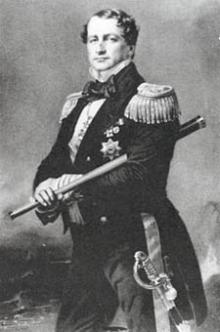

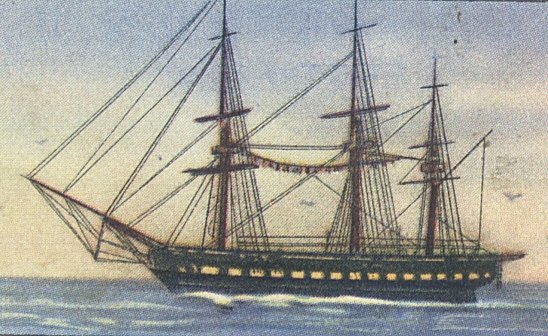
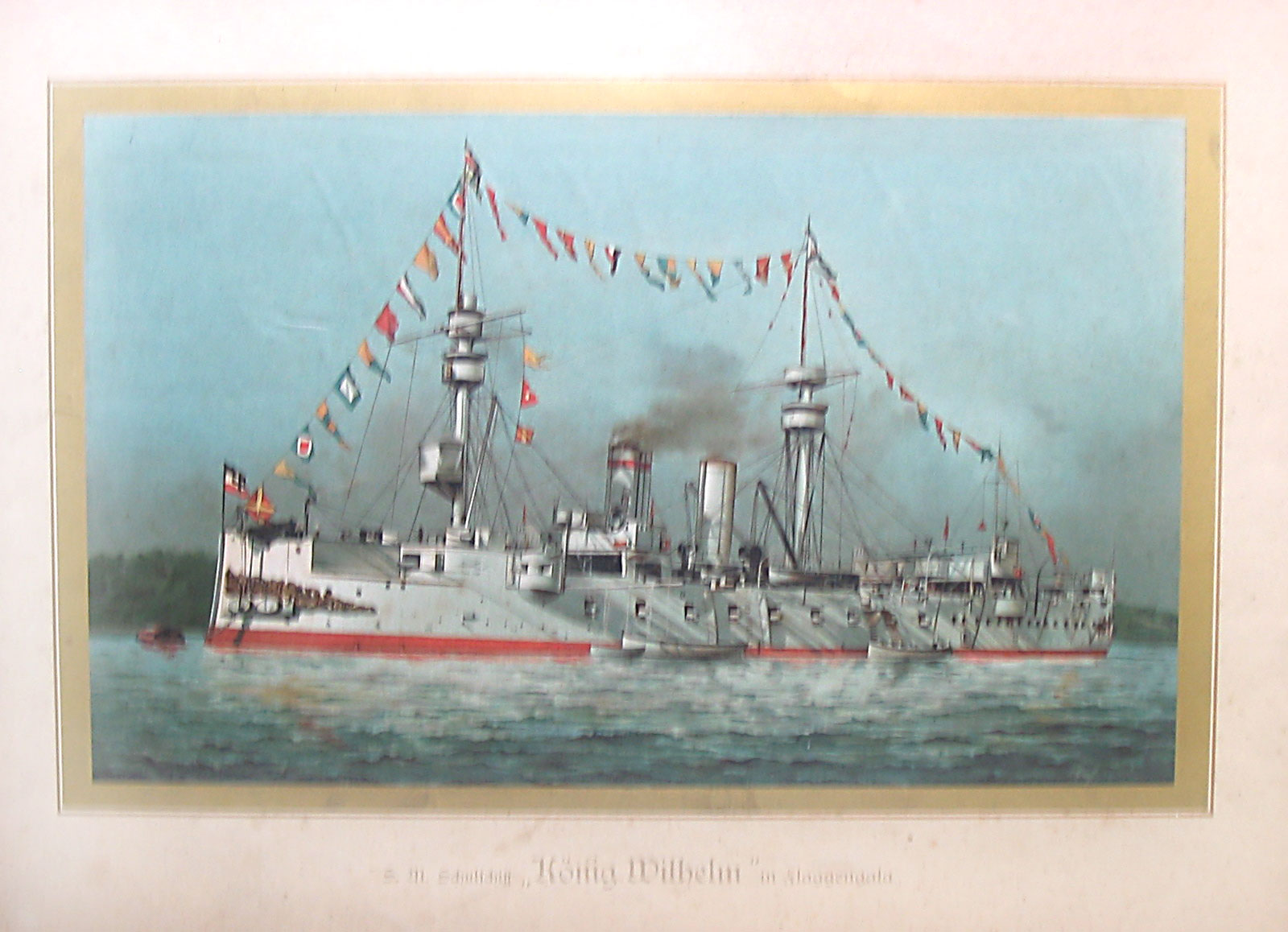
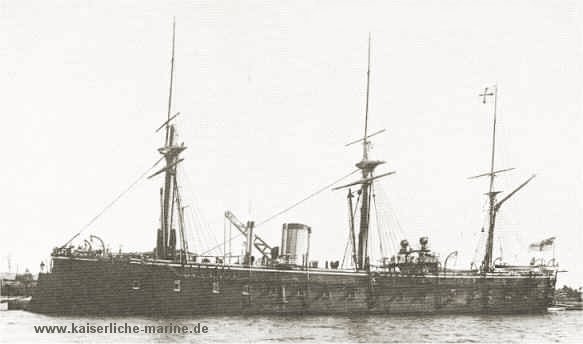
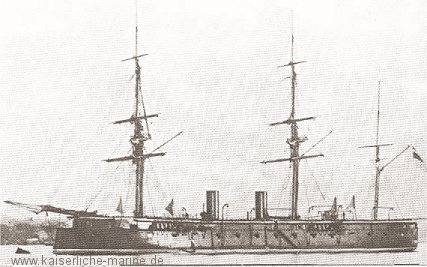
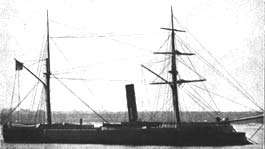
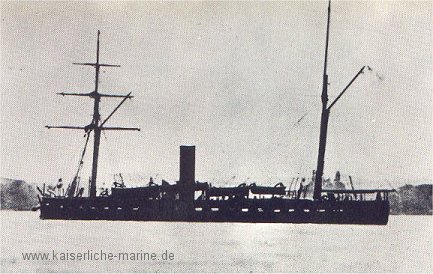
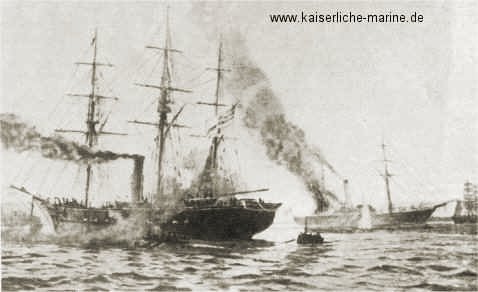
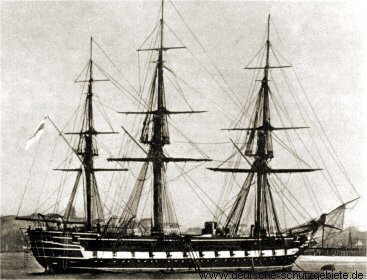
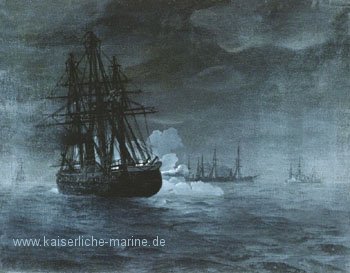
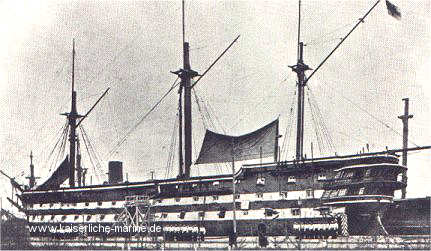
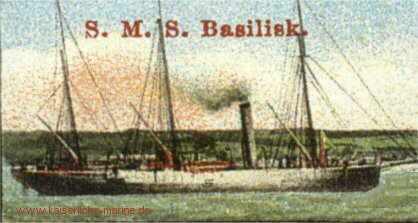
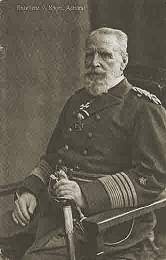
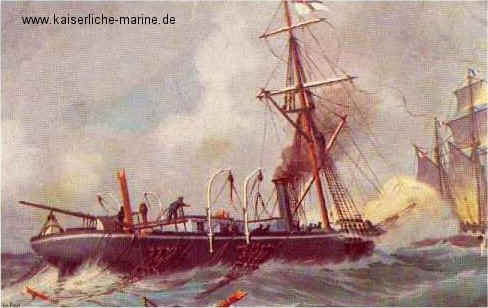
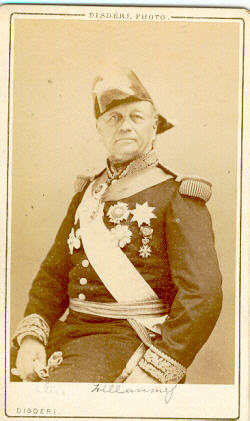
 Adler 17
Adler 17